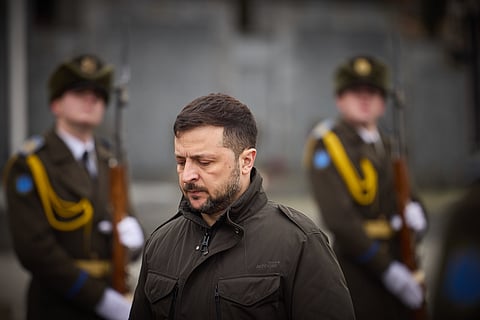

The United States has circulated a 28 point framework aimed at ending the conflict in Ukraine. The proposal was discussed at senior levels in Washington and, according to Moscow, also referenced in previous diplomatic exchanges. Kyiv remains cautious, Moscow signals potential openness, and Washington appears increasingly insistent that Ukraine accept concessions for the sake of ending hostilities. Below is a comprehensive overview of the proposal, the new video statement released by President Zelensky, and President Putin’s detailed response after consulting the permanent members of the Russian Security Council.
According to senior US officials, the plan includes a combination of political, territorial and security provisions. Key elements include:
The plan acknowledges Ukrainian statehood but freezes current lines of control. This would leave Russia in possession of most of the Donbas region and maintain the status quo across parts of Kherson and Zaporizhzhia. These conditions align with Russian strategic gains over the past years.
Ukraine would be required to adopt a constitutional ban on joining NATO. The plan includes strict limits on the size of Ukraine’s armed forces, reportedly around six hundred thousand soldiers.
Washington proposes a large reconstruction fund for Ukraine, suggested to be around two hundred billion dollars. Oversight would be led by a US chaired Peace Council, with former President Trump expected to play a central role.
While Ukraine would not join NATO, the proposal includes US backed security guarantees intended to prevent future escalation.
The US has not yet secured agreement from Ukraine, and Russia has not received the full written version. Kyiv continues to say that any settlement must respect national sovereignty.
In a video released today, President Zelensky warned that Ukraine is facing one of the most difficult moments since the start of the conflict. His message balanced resilience with acknowledgement of mounting pressure.
He stated that Ukraine is choosing between national dignity and maintaining the support of its key ally, the United States.
He insisted that Ukraine will consider peace proposals but not at the cost of what he calls vital national interests.
Zelensky again stressed that any deal must be based on Ukrainian sovereignty and said no agreement should be made without Ukrainian participation.
Political turmoil at home continues, including power shortages and internal disputes. Zelensky suggested that despite internal challenges, Ukraine remains committed to defending its position.
The tone of the speech suggested rising anxiety about Washington’s shifting priorities and concern that Ukraine may be asked to accept territorial and political concessions it previously rejected.
President Vladimir Putin held a high level meeting with the permanent members of the Russian Security Council, where the 28 point plan was a central topic.
The US had already discussed similar ideas with Russia before the Alaska meeting.
Washington asked Moscow to show flexibility in talks regarding the Ukrainian settlement.
Putin referred to the 28 point plan as a modernised version of earlier discussions.
He noted that the US has so far failed to secure Ukrainian agreement.
Moscow believes the plan could become a basis for a settlement if certain principles are met.
Putin reiterated that Russia is ready for peace talks, but also expressed satisfaction with the current progress of the special military operation, saying it continues to achieve its goals through military means.
From a Russian perspective, the plan represents long standing demands: Ukrainian neutrality, recognition of territorial changes, and demilitarisation. By maintaining battlefield pressure, Russia strengthens its bargaining position and increases leverage over any negotiated outcome. Moscow presents itself as open to negotiation while maintaining that core security concerns must be addressed.
The 28 point proposal reflects a marked shift in American strategy. The plan implies that long term Western support for Ukraine is no longer unconditional and that Washington is prepared to press Kyiv toward concessions.
Territorial concessions, neutrality, force limits and recognition of Russian control in the Donbas align with Russian strategic objectives. If adopted, the agreement would formalise gains achieved during the conflict.
Ukraine faces political instability, declining Western resources and battlefield setbacks. Zelensky’s tone shows clear concern over losing Washington’s full backing. Ukraine risks entering negotiations from a position of weakness.
Moscow understands that time works in its favor. Continued military pressure increases the likelihood that Kyiv will eventually accept terms closer to Russia’s demands. Russia also gains diplomatically by appearing open to negotiation while stating it is satisfied with progress on the ground.
The 28 point plan marks a significant development in the diplomatic landscape. The United States is signalling a desire to bring the conflict to a close, even if that requires Ukraine to accept difficult compromises. Zelensky’s message shows growing apprehension, while Putin’s response suggests confidence and calculated openness. The coming weeks will reveal whether the plan advances toward actual negotiations or remains another unrealised attempt at ending the conflict.